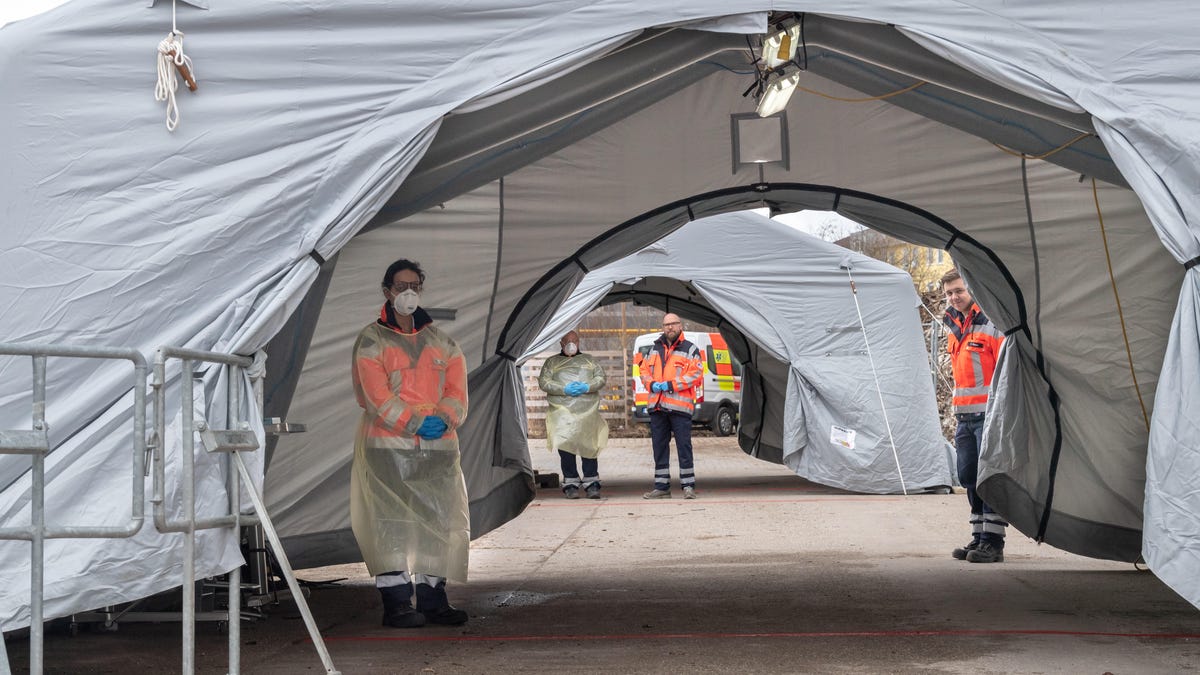WHO declares coronavirus outbreak a pandemic
After infecting over 121,000 and causing more than 4,300 deaths, the World Health Organization declares the outbreak a pandemic.

Medical personnel in Germany wait at a new drive-in test station in former barracks set up for coronavirus tests.
The World Health Organization has officially declared the coronavirus outbreak a pandemic. Tedros Adhanom Ghebreyesus, WHO director-general, made the announcement Wednesday. Since first being detected in the central Chinese city of Wuhan in December, the virus has spread to every continent except Antarctica and infected more than 121,000 people, causing 4,300 deaths.
"Pandemic is not a word to use lightly or carelessly. It is a word that, if misused, can cause unreasonable fear, or unjustified acceptance that the fight is over, leading to unnecessary suffering and death," Tedros said.
WHO director-general Tedros Adhanom Ghebreyesus has declared COVID-19 a pandemic.
The WHO has, in the past, defined a pandemic as "the worldwide spread of a new disease." The coronavirus, which causes the illness COVID-19, spread to over 110 countries within three months. On Jan. 30, the WHO announced the coronavirus outbreak was a "public health emergency of international concern" around the time almost 8,000 cases had been confirmed across 18 countries and the death toll was approaching 200.
The WHO was reluctant to call the COVID-19 outbreak a pandemic, in an attempt to prevent panic, and suggested containment measures were helping control the spread, but experts suggested the conditions were met in late February as case numbers in Italy, South Korea and Iran began to rapidly climb. On March 9, Tedros announced "the threat of a pandemic has become very real" but reiterated the spread of disease was still under control.
"We cannot say this loudly enough, or clearly enough, or often enough: all countries can still change the course of this pandemic," Tedros said during the briefing.
Coronavirus updates
The formal declaration of a pandemic doesn't mean it's time to panic. Rather, it allows health authorities around the world to begin planning for a new phase in battling the disease, outlining strategies to mitigate further spread and help the public understand the signs and symptoms of COVID-19 infection.
The influenza virus, responsible for "the flu", spreads around the world every year -- so why is that not a pandemic? Mostly, it's because the community has built up resistance to influenza viruses. Though sometimes they mutate and become more pathogenic.
WHO last declared a pandemic on June 11, 2009, when widespread transmission of the influenza virus H1N1 -- or "swine flu" -- rapidly spread across the globe. In that instance, it took the WHO a little under two months to move from a public health emergency notification to "pandemic." At the time, more than 70 countries had reported cases of the disease.

